

|
|
Flying Deuces (The) (Blu-ray)
[Blu-ray]
Blu-ray B - United Kingdom - Network Review written by and copyright: Paul Lewis (15th June 2015). |
|
The Film
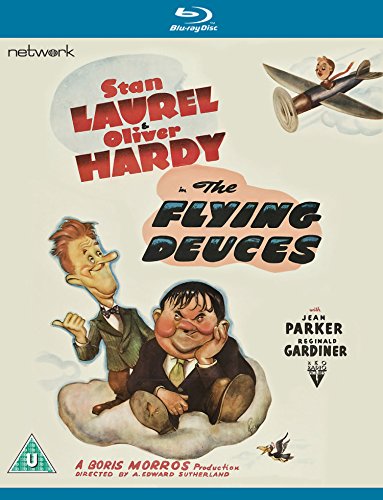 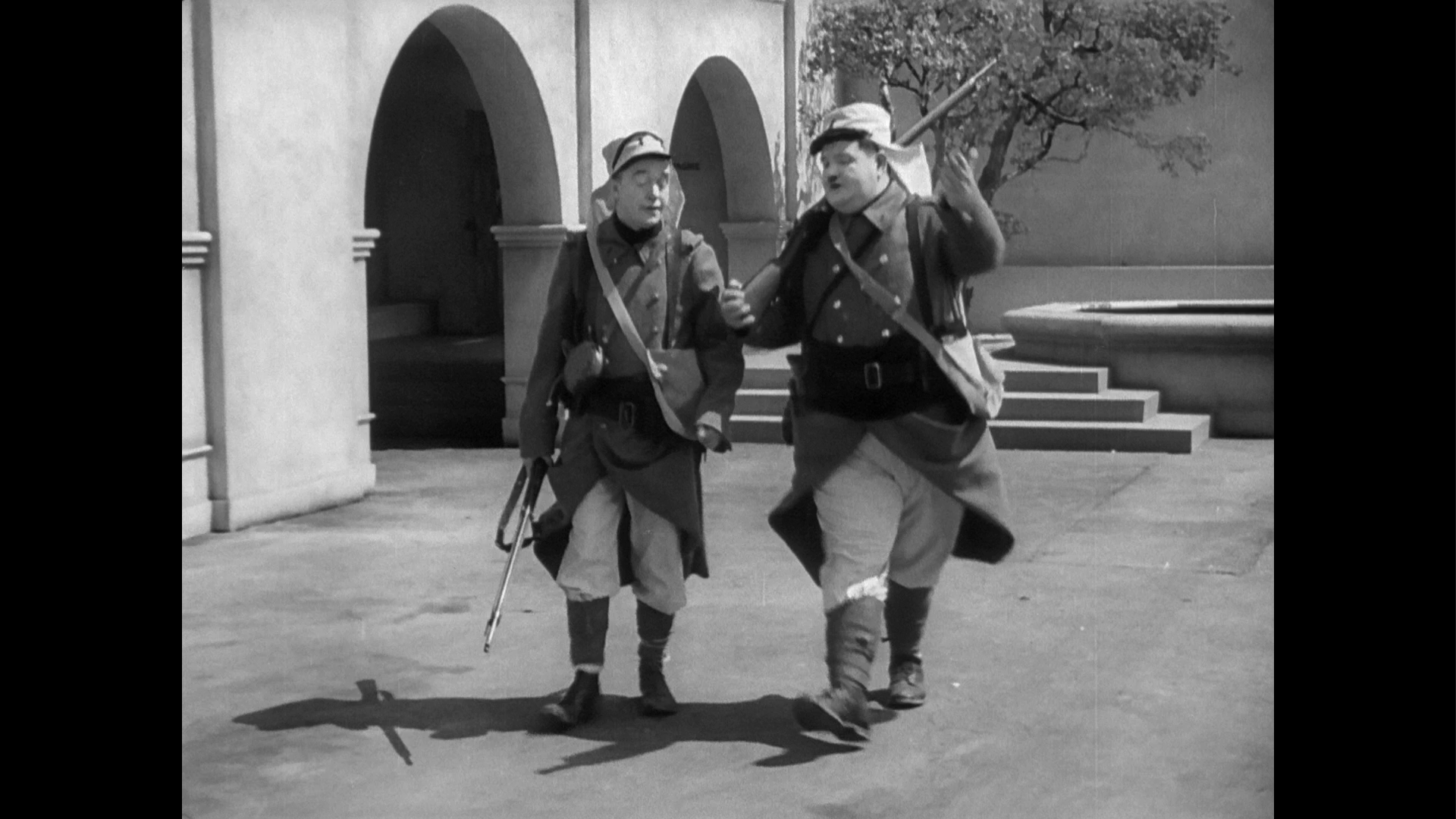 The Flying Deuces (A Edward Sutherland, 1939) The Flying Deuces (A Edward Sutherland, 1939)
Usually cited as amongst the best screen work of Stan Laurel and Oliver Hardy outside of their films for Hal Roach studios, The Flying Deuces (A Edward Sutherland, 1939) came mid-way through Laurel and Hardy’s screen career – though it’s almost impossible to agree on exactly how many screen appearances Laurel and Hardy made as ‘Stan and Ollie’, owing to the fact that the actors appeared on screen together a number of times in different personae, their partnership taking some time before it developed the ‘Stan and Ollie’ shtick for which they are most famous, and also made cameo appearances in several films. However, together they made twenty-five feature films and appeared together in almost eighty short films (both silent and sound films). The pair first worked together on the 1921 two-reel film ‘The Lucky Dog’ (Jess Robbins), although in that film Laurel and Hardy do not appear as the ‘Stan and Ollie’ duo familiar from later screen appearances. After both of them signed a contract with Hal Roach studios, they appeared together for the second time – though again not as ‘Stan and Ollie’ – in Fred Guiol’s ‘45 Minutes from Hollywood’. Working with Roach and supervising director Leo McCarey, Laurel and Hardy gradually developed the ‘Stan and Ollie’ characters over a number of two-reel comedies, beginning with Clyde Bruckman’s ‘Putting Pants on Philip’ in 1927. 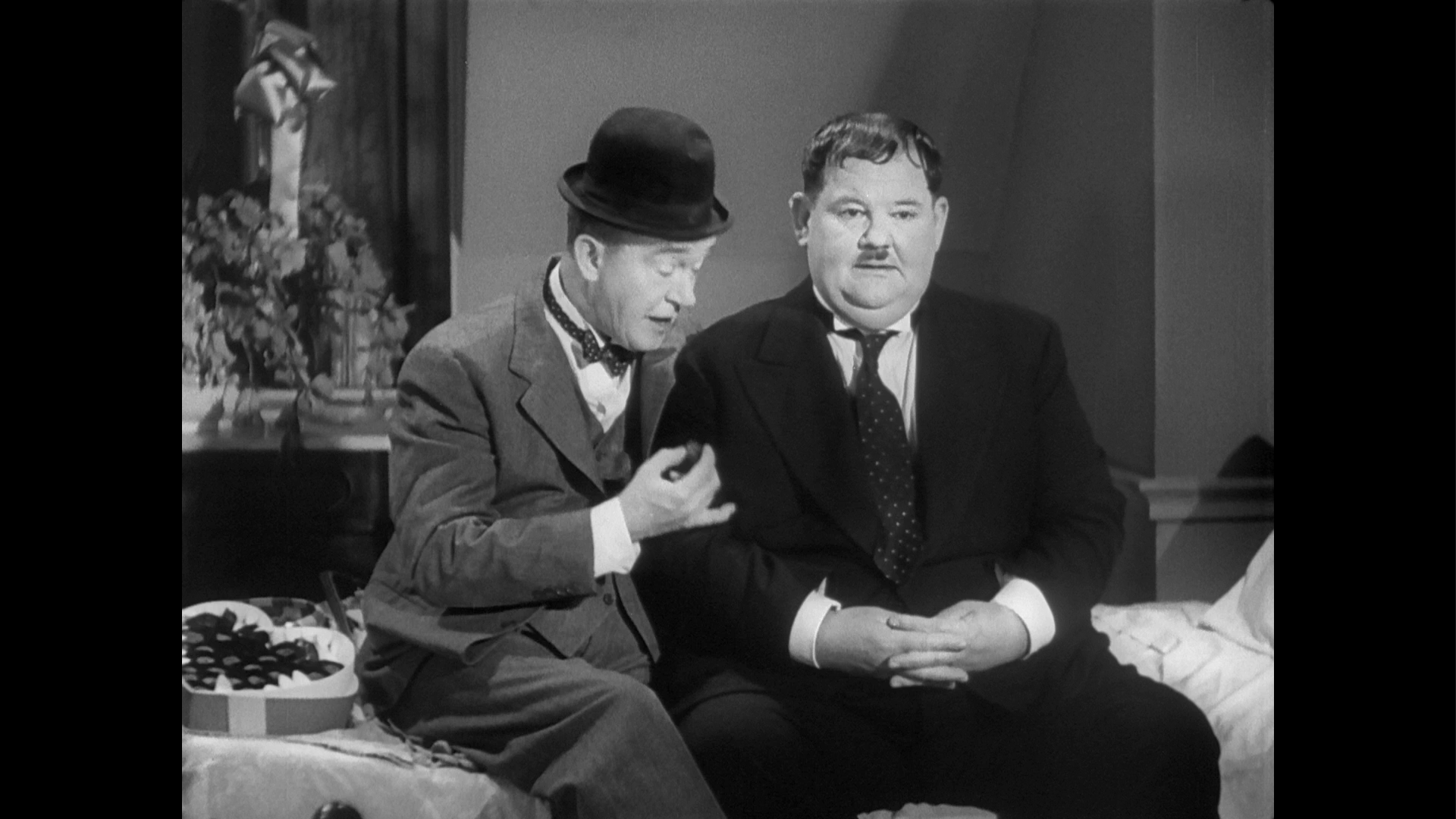 Whilst many comedians of the silent era struggled to adapt their humour to the demands of talking pictures, Laurel and Hardy demonstrated a surprising confidence in their early talkies, and their films’ reputation for outrageous slapstick often belies the witty, usually fast-paced dialogue. Laurel and Hardy’s first sound film was ‘Unaccustomed As We Are’ (Lewis R Foster & Hal Roach, 1929), whose opening moments parody the stilted nature of many early talkies, and in which Ollie delivers for the first time what would become one of the pair’s most enduring catchphrases: ‘Why don’t you do something to help me?’ (Parts of this film were repurposed for Laurel and Hardy’s 1938 feature film Block-Heads, directed by John G Blystone.) Whilst many comedians of the silent era struggled to adapt their humour to the demands of talking pictures, Laurel and Hardy demonstrated a surprising confidence in their early talkies, and their films’ reputation for outrageous slapstick often belies the witty, usually fast-paced dialogue. Laurel and Hardy’s first sound film was ‘Unaccustomed As We Are’ (Lewis R Foster & Hal Roach, 1929), whose opening moments parody the stilted nature of many early talkies, and in which Ollie delivers for the first time what would become one of the pair’s most enduring catchphrases: ‘Why don’t you do something to help me?’ (Parts of this film were repurposed for Laurel and Hardy’s 1938 feature film Block-Heads, directed by John G Blystone.)
Having developed their characters in two-reel pictures, Stan and Ollie’s first feature film was Pardon Us (James Parrott, 1931). Owing to ongoing creative conflicts (largely between Stan Laurel and Hal Roach), Laurel and Hardy split with Hal Roach studios in the late-1930s and, in the 1940s, worked for 20th Century Fox and MGM. The Flying Deuces was made at a point in which the working relationship between Roach and Stan Laurel could be said to have broken down. Despite this, in 1939 Roach signed the pair for a one year contract during which they would make their final two four-reel pictures for him: A Chump at Oxford (Alfred J Goulding, 1940) and Saps at Sea (Gordon Douglas, 1940). During this time, they were approach by independent producer Boris Morros with the script for The Flying Deuces, which Laurel and Hardy made for RKO as a one-off picture. Shot under the working title of ‘The Aviator’, The Flying Deuces is a partial reworking of Laurel and Hardy’s 1931 short ‘Beau Hunks’ (James W Horne), in which Stan and Ollie join the Foreign Legion after Ollie is rejected by his sweetheart (Jean Harlow), only to discover that the other men in the barracks at which they are stationed are there to forget their lost love – and the object of all of these men’s affections is Ollie’s darling Jeanie-Weenie. 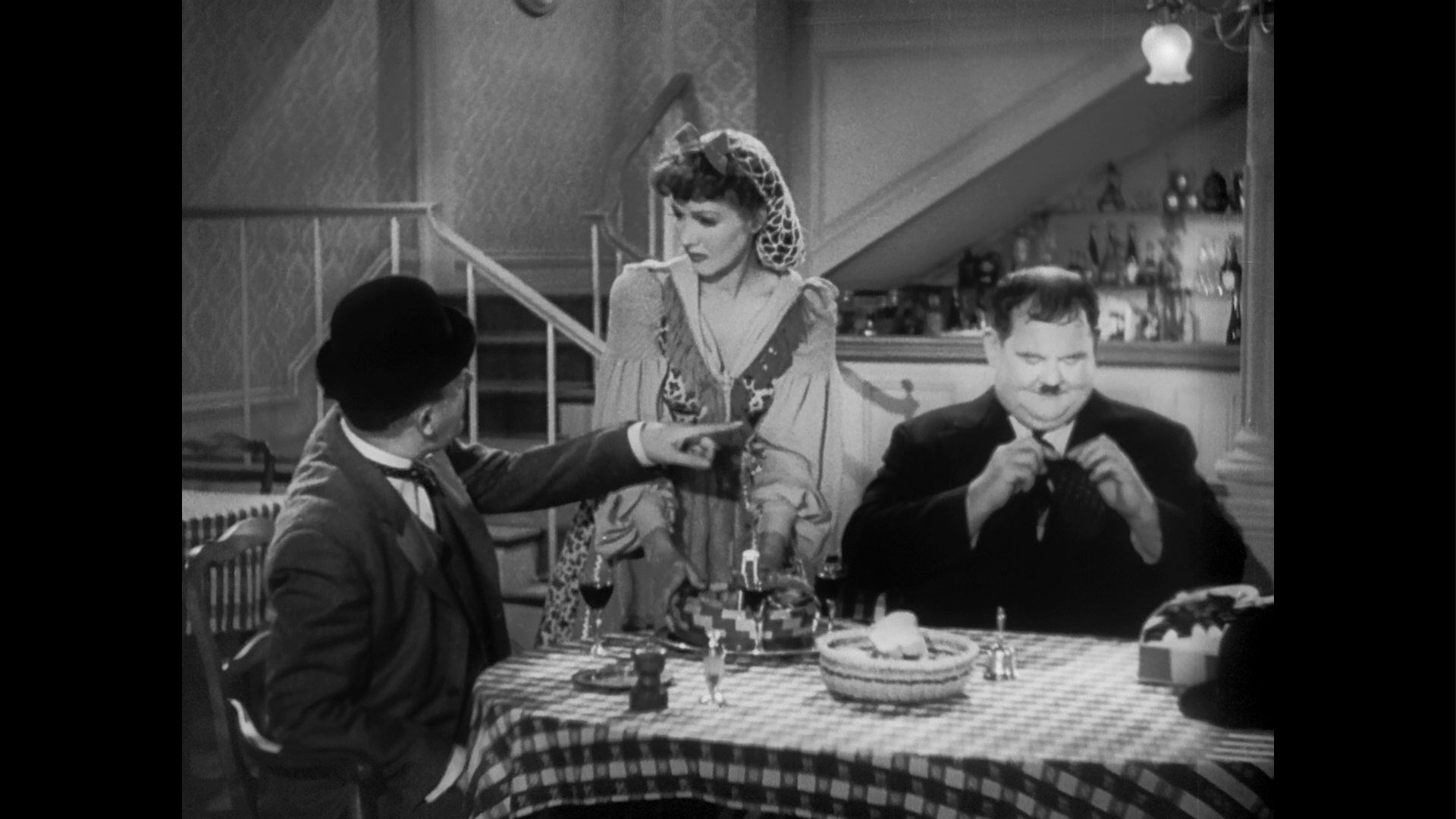 The Flying Deuces begins with Stan and Ollie – playing a pair of fishmongers from Des Moines, Iowa – holidaying in Paris. Ollie is in love with Georgette, the daughter of the innkeeper of the inn in which he and Stan are staying. However, Georgette is betrothed to Francois, a member of the French Foreign Legion. Ollie decides to end it all by throwing himself into the Seine, and persuades Stan to join him. However, they are interrupted by Francois. (Stan and Ollie have never met Georgette’s fiancé.) Francois persuades Stan and Ollie to ‘join the Foreign Legion [….] To forget’. (‘Say, we can’t join the Foreign Legion’, Stan observes, ‘We’ve got to be back in Des Moines on the seventeenth’.) The Flying Deuces begins with Stan and Ollie – playing a pair of fishmongers from Des Moines, Iowa – holidaying in Paris. Ollie is in love with Georgette, the daughter of the innkeeper of the inn in which he and Stan are staying. However, Georgette is betrothed to Francois, a member of the French Foreign Legion. Ollie decides to end it all by throwing himself into the Seine, and persuades Stan to join him. However, they are interrupted by Francois. (Stan and Ollie have never met Georgette’s fiancé.) Francois persuades Stan and Ollie to ‘join the Foreign Legion [….] To forget’. (‘Say, we can’t join the Foreign Legion’, Stan observes, ‘We’ve got to be back in Des Moines on the seventeenth’.)
After joining the Foreign Legion, Stan and Ollie find themselves stationed in Morocco, where they receive their itinerary (‘If we do all that, we won’t have time to forget’, Stan notes). They are told by the camp commandant (Charles Middleton, who also played the commandant in ‘Beau Hunks’) that they will be paid no more than the equivalent of three American cents a day. The pair are placed on laundry duties, with literally a small hill of laundry to wash and iron. Stan and Ollie make plans to leave the camp and encounter Georgette, now married to Francois, disembarking from an aeroplane. Meanwhile, the camp commandant has ordered Stan and Ollie to be arrested for desertion, for which they will face the firing squad. The pair are to be shot at sunrise (‘I hope it’s cloudy tomorrow’, Stan says). However, they manage to escape using a note which informs them of a tunnel under their cell. Crawling through this tunnel, they find it emerges in the wine cellar of Francois and Georgette’s quarters. Stan and Ollie find themselves in Georgette’s bedroom; seeing the pair, she faints. The pair place her on her bed and are trying to bring her to when Francois enters, believing Stan and Ollie to be attempting to accost his wife; Francois is joined in his pursuit of the hapless duo by the entire company. 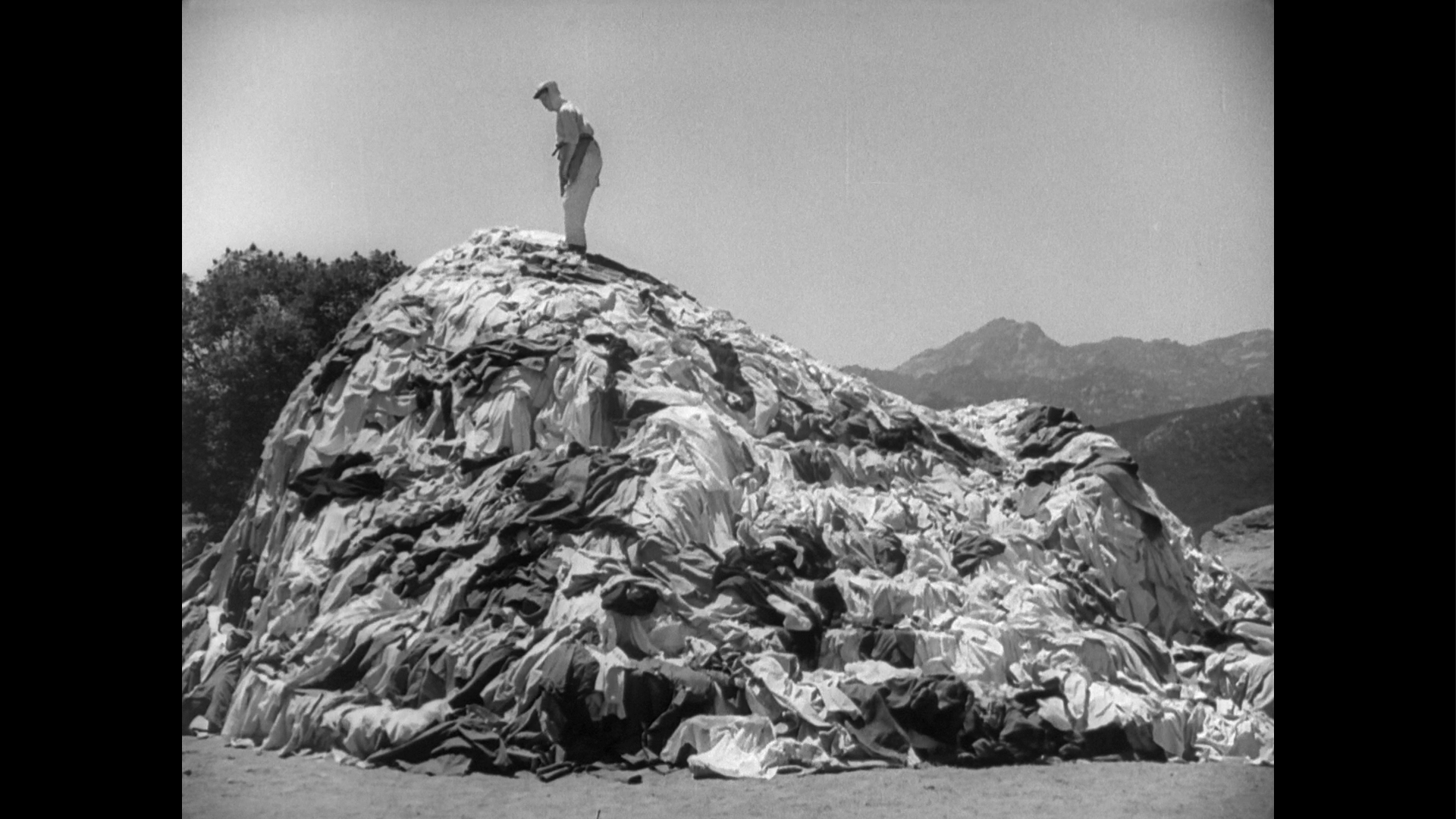 The film is filled with wonderful bits of business: the opening sequence depicts an artist drawing an impression of Stan and Ollie, and upon being shown the drawing, Stan observes, ‘Gee, that’s swell photography’; Stan repeatedly banging his head on the sloping roof of the room he and Ollie share at the inn; Stan spilling salt and being told by Ollie, ‘Throw it over your shoulder’, in response to which Stan throws the whole saltpot over his shoulder, resulting in the sound of glass smashing offscreen; Ollie struggling to ‘forget’ and being told by Stan, ‘If you can’t forget, why don’t you try and pretend to forget’.  One of the film’s highlights is the extended sequence of gallows humour in which Ollie, after discovering that Georgette is already engaged to Francois, decides to commit suicide. The idea is put in Ollie’s head by Stan, who tells his friend, ‘If I felt as bad as you, I’d go and drown myself’. Ollie determines that the best way to achieve this is to throw himself into the Seine, a block of concrete tied to his waist. (To top it all off, unbeknownst to Stan and Ollie and in defiance of all real world logic, a man-eating shark(!) has escaped and is on the loose.) The sequence is a wonderful combination of black humour, slapstick and rapidfire dialogue. Upon seeing Ollie’s plan, Stan says his farewells to his friend. ‘Where are you going?’, Ollie asks. ‘Well, I don’t want to get my name dragged into this’, Stan tells him. However, Ollie ties another rope, the end of which is also attached to the same block of concrete, around the waist of Stan. ‘Now when I count three, we’ll both jump in’, Ollie orders. ‘What have I got to jump in there for? I’m not in love!’, a bemused Stan responds. ‘So that’s the kind of guy you are’, Ollie begins, ‘After all I’ve done for you, you’d let me jump in there alone! Do you realise that after I’m gone, that [sic] you’d just go on living by yourself? People would stare at you and wonder what you are, and I wouldn’t be there to tell them! There’d be no-one to protect you! Do you want that to happen to you?’ One of the film’s highlights is the extended sequence of gallows humour in which Ollie, after discovering that Georgette is already engaged to Francois, decides to commit suicide. The idea is put in Ollie’s head by Stan, who tells his friend, ‘If I felt as bad as you, I’d go and drown myself’. Ollie determines that the best way to achieve this is to throw himself into the Seine, a block of concrete tied to his waist. (To top it all off, unbeknownst to Stan and Ollie and in defiance of all real world logic, a man-eating shark(!) has escaped and is on the loose.) The sequence is a wonderful combination of black humour, slapstick and rapidfire dialogue. Upon seeing Ollie’s plan, Stan says his farewells to his friend. ‘Where are you going?’, Ollie asks. ‘Well, I don’t want to get my name dragged into this’, Stan tells him. However, Ollie ties another rope, the end of which is also attached to the same block of concrete, around the waist of Stan. ‘Now when I count three, we’ll both jump in’, Ollie orders. ‘What have I got to jump in there for? I’m not in love!’, a bemused Stan responds. ‘So that’s the kind of guy you are’, Ollie begins, ‘After all I’ve done for you, you’d let me jump in there alone! Do you realise that after I’m gone, that [sic] you’d just go on living by yourself? People would stare at you and wonder what you are, and I wouldn’t be there to tell them! There’d be no-one to protect you! Do you want that to happen to you?’
The wonderful, blackly comic absurdity of this sequence, which gets at the heart of the relationship between these two companions, finds its corollary in Samuel Beckett’s masterpiece of absurdist theatre, the 1956 play Waiting for Godot. In Beckett’s play, the protagonists Vladimir and Estragon decide to commit suicide by hanging themselves from the bough of a tree. Estragon expresses a fear ‘of surviving without his partner [Vladimir]’, and both Estragon and Ollie exploit ‘the possibility of the other partner [Vladimir and Stan] being left alone to convince him that things must be arranged so that they both manage to die’ (Graves, 2009: 88). The references to the escaped man-eating shark within this sequence are admittedly slim and never fully exploit the comic potential of this scenario, and some presentations of the film omit the headline telling the audience of the shark’s escape and the shots in which we see it circling the area of the riverbank where Stan and Ollie discuss Ollie’s preferred method of suicide. Thankfully these moments, though admittedly underdeveloped, are present in this presentation of the film. The film is uncut and runs for 68:30 mins.
Video
The film is presented here in its original aspect ratio of 1.33:1; the 1080p presentation uses the AVC codec and takes up approximately 11Gb of space on the disc.  Along with the final Stan and Ollie film, Atoll K (Leo Joannon, 1951), The Flying Deuces is in the public domain in America and, as such, has seen numerous poor quality DVD releases. Along with the final Stan and Ollie film, Atoll K (Leo Joannon, 1951), The Flying Deuces is in the public domain in America and, as such, has seen numerous poor quality DVD releases.
This restoration is pretty impressive, especially in comparison with previous DVD releases of the film. Contrast is good, with strong midtones and ‘punchy’ blacks, though sometimes the blacks seem to be unnaturally ‘crushed’ (eg, some of the detail in Ollie’s black suit is lost). There’s often a pretty striking sense of depth to the image which reminds the viewer how good the staging is, how ‘busy’ the sets are and how beautifully lit the whole production is – something which is sometimes lost in the ‘flatness’ of the DVD format. Damage is mostly limited to vertical lines here and there, which are notoriously difficult to remove. Though specific details about the restoration don’t seem to be available, there are some curious fluctuations in the image (one at 10:15, for example) which seem to suggest that footage has been patched-in from an inferior, higher contrast (SD?) source. Other shots (for example of the legionnaires marching within the compound) also look to be from a slightly inferior source, and in a couple of sequences there is some noticeable ‘ghosting’ that is absent elsewhere. It’s probably a reasonable conclusion to reach that this restoration is a patchwork quilt of the best elements that were available. A seemingly natural level of film grain is evident too. The presentation isn’t perfect but it’s an admirable restoration and, especially given the film’s ‘patchy’ previous home video releases, is definitely the best way to view The Flying Deuces on home video. (It's certainly an improvement over the VCI Blu-ray released recently in the US.) 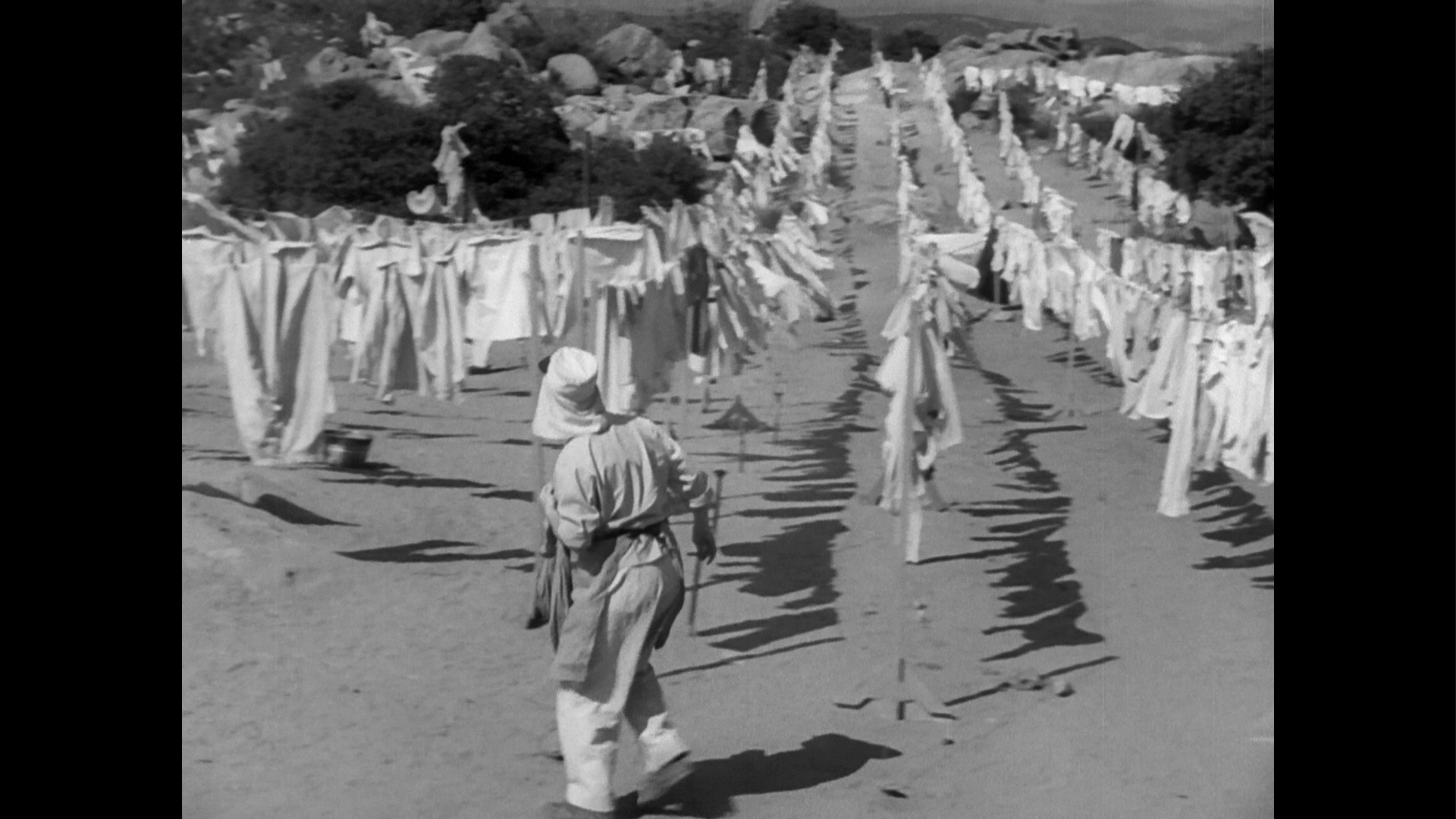 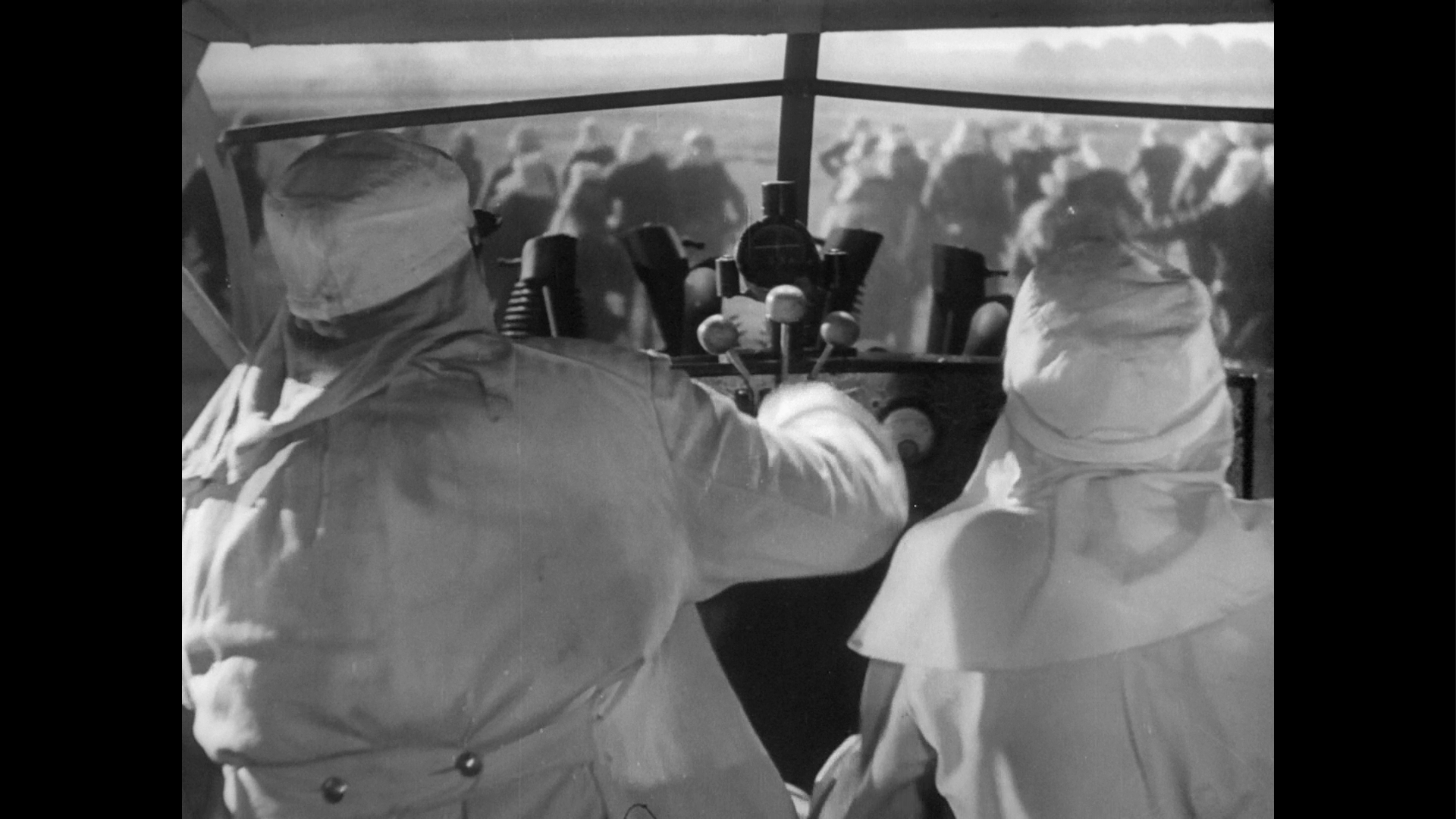 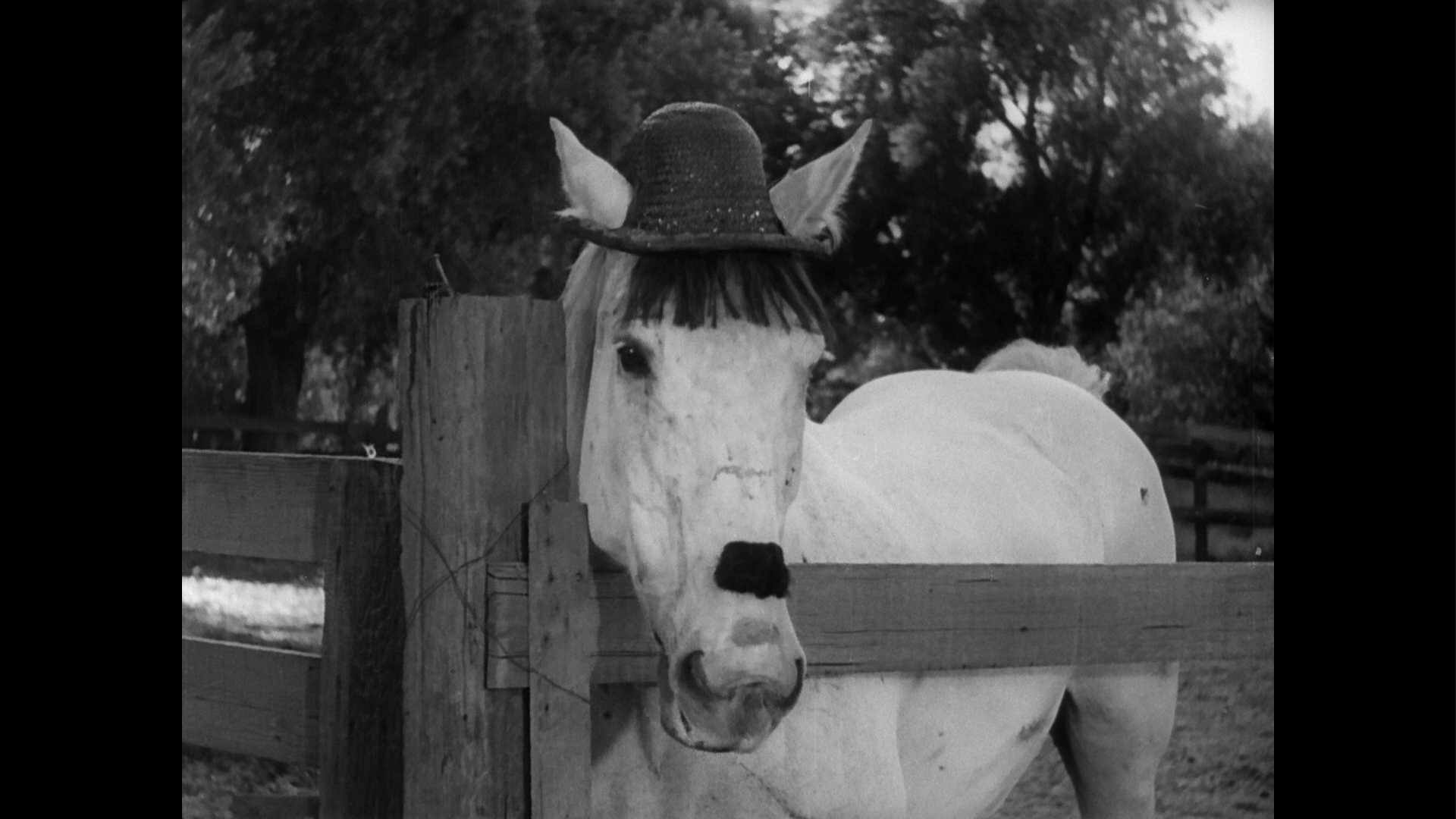 NB. Some larger screen grabs are included at the bottom of this review.
Audio
Audio is presented via a LPCM 2.0 mono track in English. Dialogue is clean and clear throughout. A noticeable crackle can be heard in the background from time to time, but nothing that shouldn’t be expected from a film of this vintage. Optional English subtitles are provided.
Extras
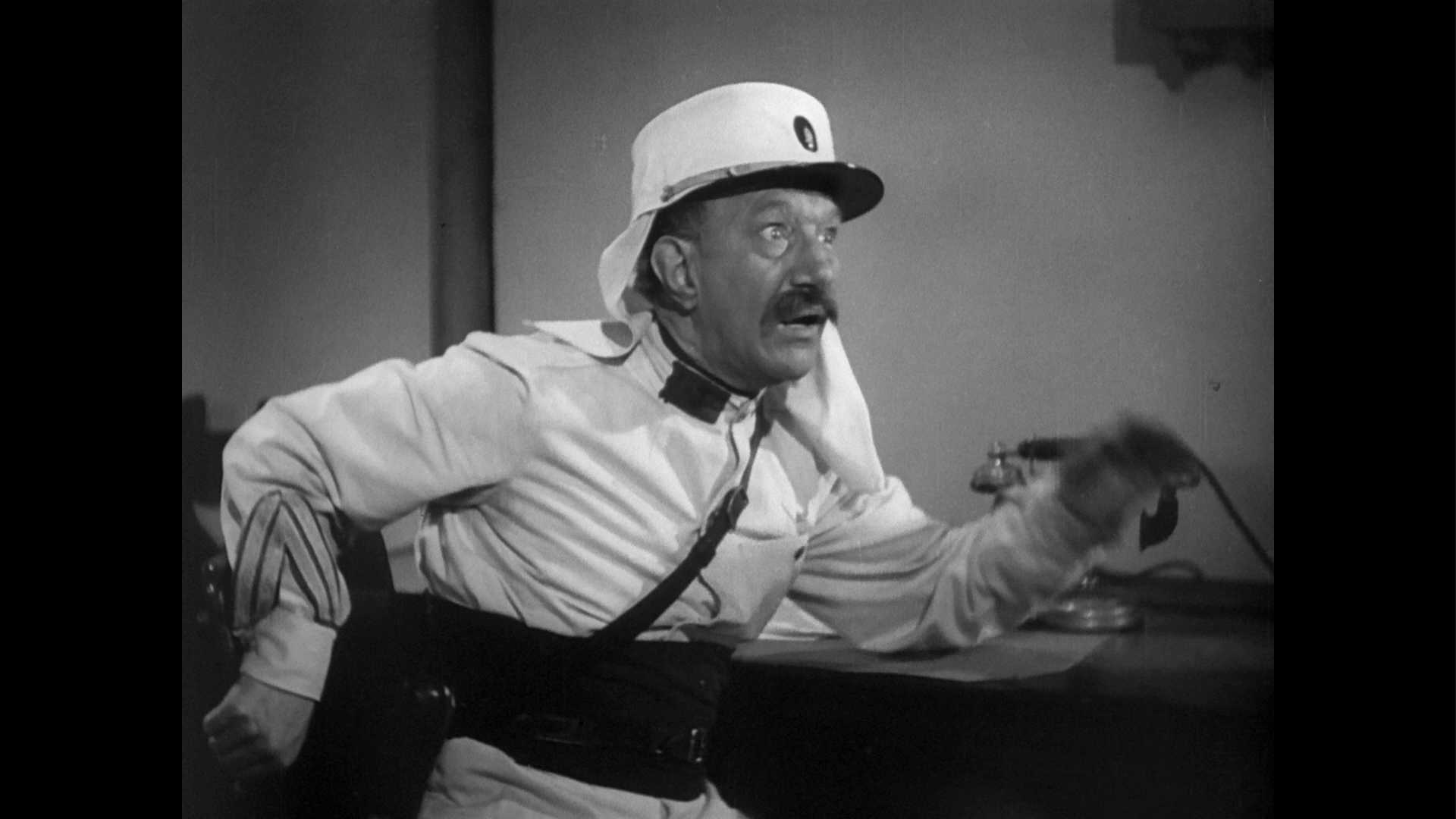 The disc includes the German version of The Flying Deuces, entitled Dick and Doof in der Fremdemlegion (68:22). As many Stan and Ollie fans are no doubt aware, their feature films were often shot in multiple versions, with Stan and Ollie reading their lines (in Italian, German, Spanish or French) phonetically. After the film was shot, it was previewed for ‘French, German, Italian and Spanish interpreters [… who] translated our dialogue into each language […] [W]e'd set up the camera, and we'd do the French version of the first scene […] and each scene we did four times before we moved the camera for the different change’ (Stan Laurel, quoted in Skretvodt, 1987: 184). (Foreign audiences would often be ‘amazed that we couldn’t speak their language’; Laurel, quoted in ibid.). These alternate versions would be shot on the same sets as the English language version; the supporting roles would be filled with native speakers of whichever language that version of the picture was filmed in. However, this German version of The Flying Deuces seems to be dubbed (though it may well feature Laurel and Hardy’s own voices) and, in fact, visually it seems to be identical to the main presentation of the film. The disc includes the German version of The Flying Deuces, entitled Dick and Doof in der Fremdemlegion (68:22). As many Stan and Ollie fans are no doubt aware, their feature films were often shot in multiple versions, with Stan and Ollie reading their lines (in Italian, German, Spanish or French) phonetically. After the film was shot, it was previewed for ‘French, German, Italian and Spanish interpreters [… who] translated our dialogue into each language […] [W]e'd set up the camera, and we'd do the French version of the first scene […] and each scene we did four times before we moved the camera for the different change’ (Stan Laurel, quoted in Skretvodt, 1987: 184). (Foreign audiences would often be ‘amazed that we couldn’t speak their language’; Laurel, quoted in ibid.). These alternate versions would be shot on the same sets as the English language version; the supporting roles would be filled with native speakers of whichever language that version of the picture was filmed in. However, this German version of The Flying Deuces seems to be dubbed (though it may well feature Laurel and Hardy’s own voices) and, in fact, visually it seems to be identical to the main presentation of the film.
This German version of the film is, really, the same picture and is presented with a German LPCM 2.0 mono audio track. No English subtitles are provided for this alternate version of the picture, however. Also included is an image gallery (4:47).
Overall
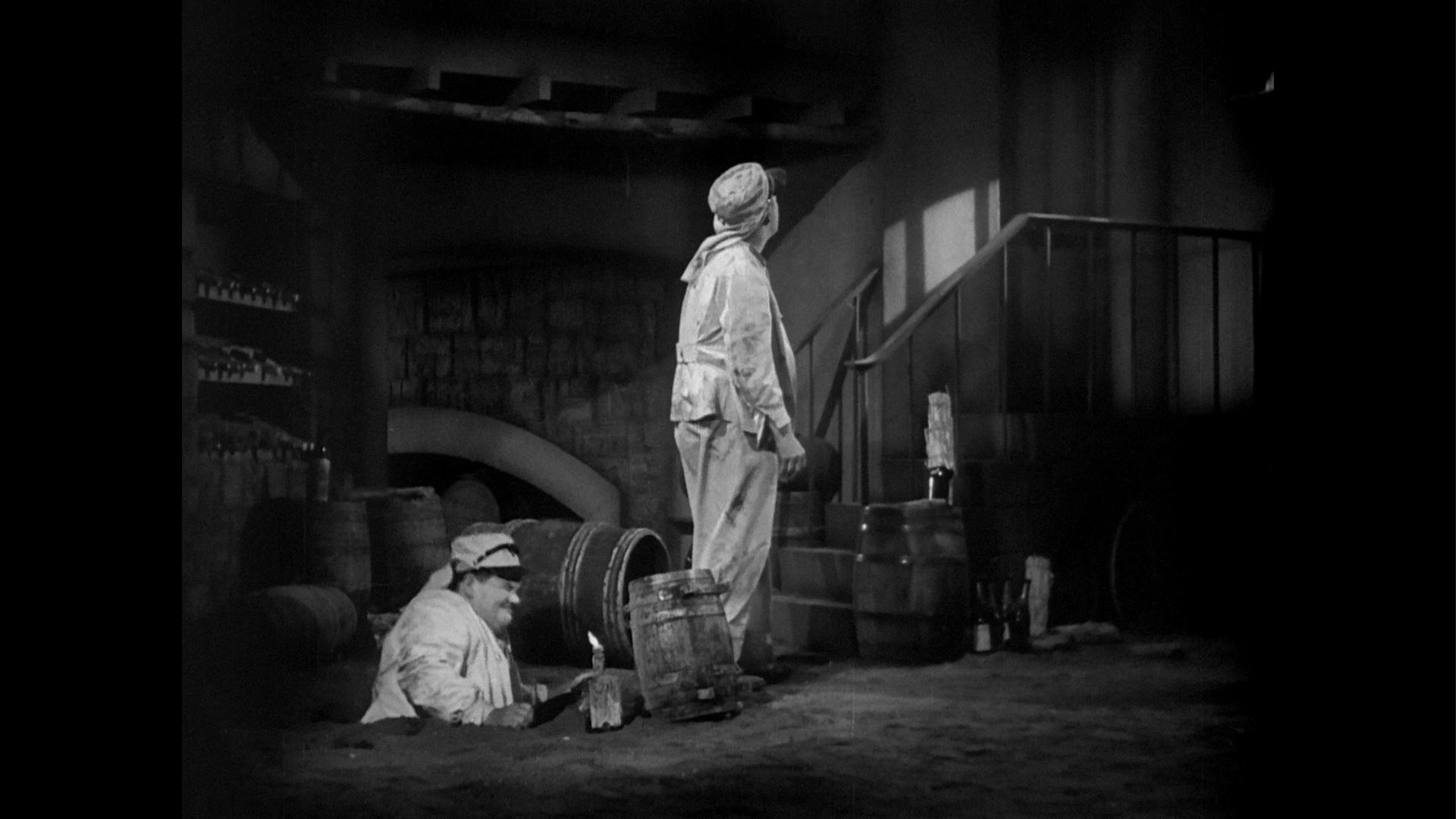 Complete with musical interludes, one of which features Stan and Ollie stopping in their tracks to perform an impromptu song-and-dance to ‘Shine On, Harvest Moon’, The Flying Deuces features much of the contrast between the childlike Stan and the pompous and self-aggrandising Ollie that the pair’s fans know and love. (As Charles Barr notes in relation to the musical interludes in Stan and Ollie’s films, ‘It is part of the temperament of both that they can be distracted, like children, from business, however serious, by what is immediately appealing’; Barr, 1974: 101.) Being a retread of ‘Beau Hunks’, The Flying Deuces isn’t necessarily top-tier Stan and Ollie, but it’s certainly one of their stronger later films. This Blu-ray release contains a pleasing restoration of the film, certainly an improvement over any of the home video releases I’ve previously encountered, with the added sense of depth to the photography reminding the viewer of just how well-staged Stan and Ollie’s pictures could be. The inclusion of the alternate German version of the film is a nice idea but frustratingly lacks English subtitles. Nevertheless, this is a pleasing release that any Stan and Ollie fan should love and enjoy. Complete with musical interludes, one of which features Stan and Ollie stopping in their tracks to perform an impromptu song-and-dance to ‘Shine On, Harvest Moon’, The Flying Deuces features much of the contrast between the childlike Stan and the pompous and self-aggrandising Ollie that the pair’s fans know and love. (As Charles Barr notes in relation to the musical interludes in Stan and Ollie’s films, ‘It is part of the temperament of both that they can be distracted, like children, from business, however serious, by what is immediately appealing’; Barr, 1974: 101.) Being a retread of ‘Beau Hunks’, The Flying Deuces isn’t necessarily top-tier Stan and Ollie, but it’s certainly one of their stronger later films. This Blu-ray release contains a pleasing restoration of the film, certainly an improvement over any of the home video releases I’ve previously encountered, with the added sense of depth to the photography reminding the viewer of just how well-staged Stan and Ollie’s pictures could be. The inclusion of the alternate German version of the film is a nice idea but frustratingly lacks English subtitles. Nevertheless, this is a pleasing release that any Stan and Ollie fan should love and enjoy.
References: Barr, Charles, 1974: Laurel & Hardy. University of California Press Graves, Robert B, 2009: ‘“The hardy Laurel”: Becket and Early Film Comedy’, In: Kinderman, William & Jones, Joseph E (eds), 2009: Genetic Criticism and the Creative Process: Essays from Music, Literature and Theater. University of Rochester Press: 83-94 Skretvodt, Randy, 1987: Laurel and Hardy: The Magic Behind the Movies. California: Moonstone Press 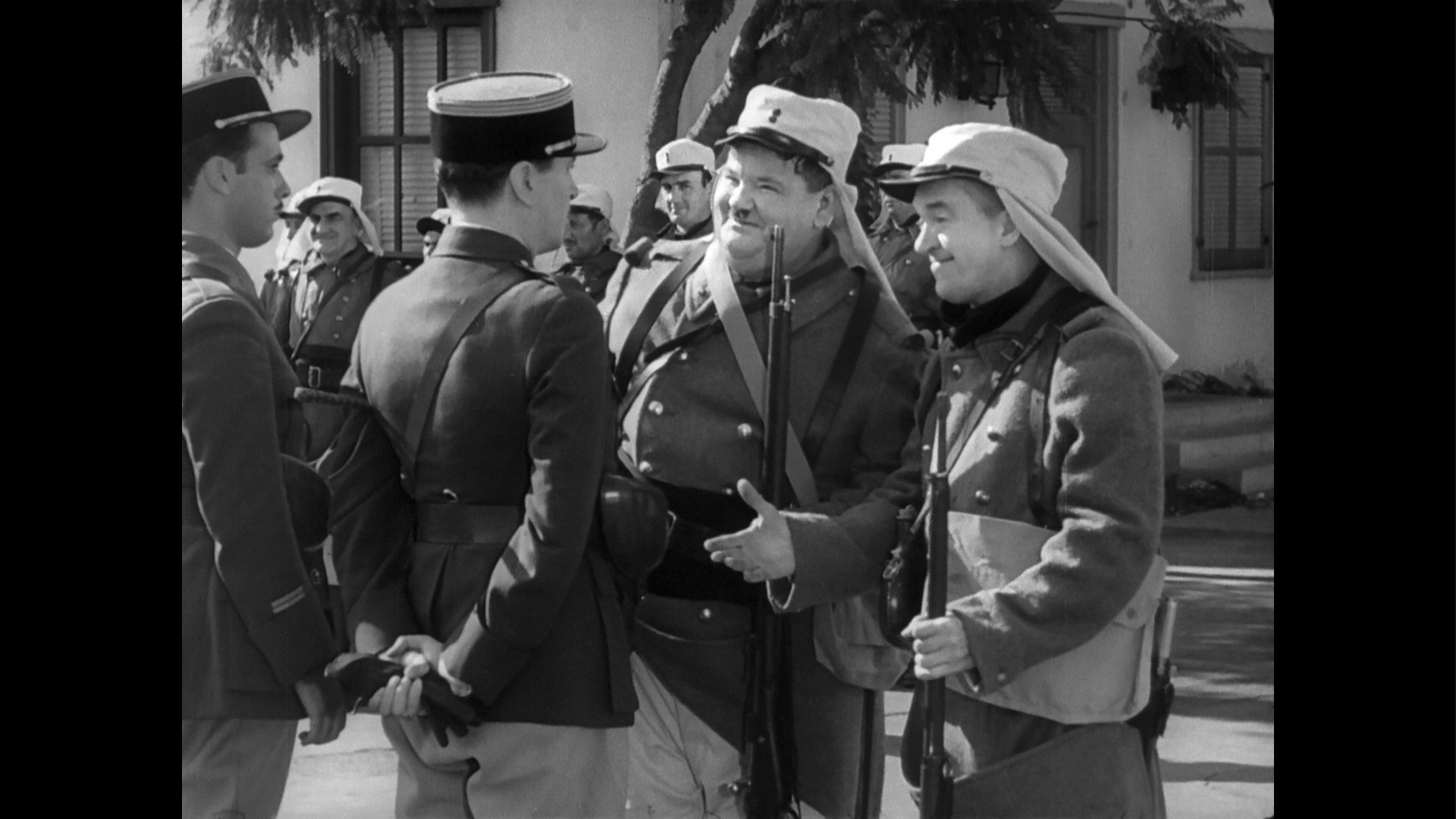
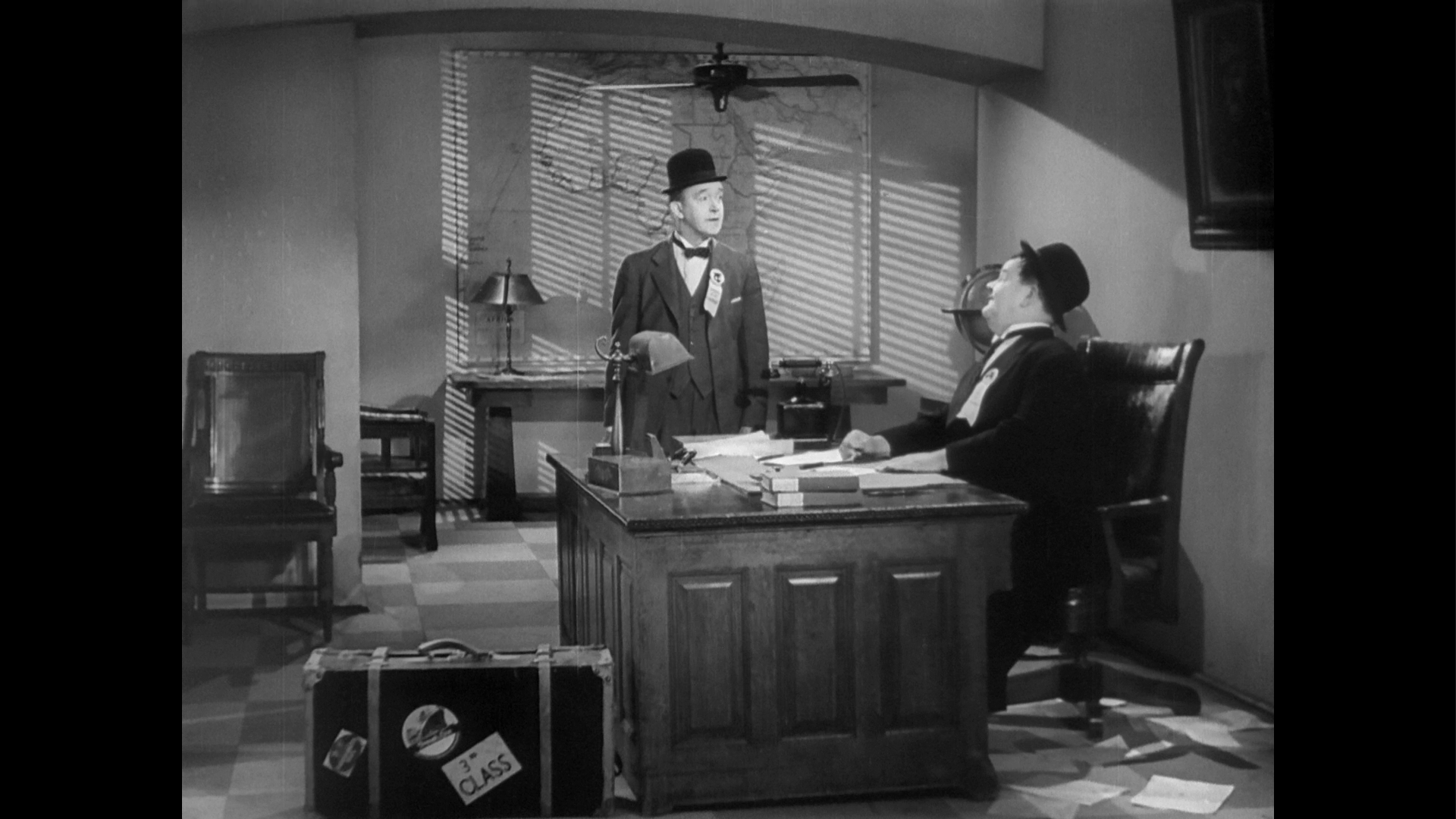
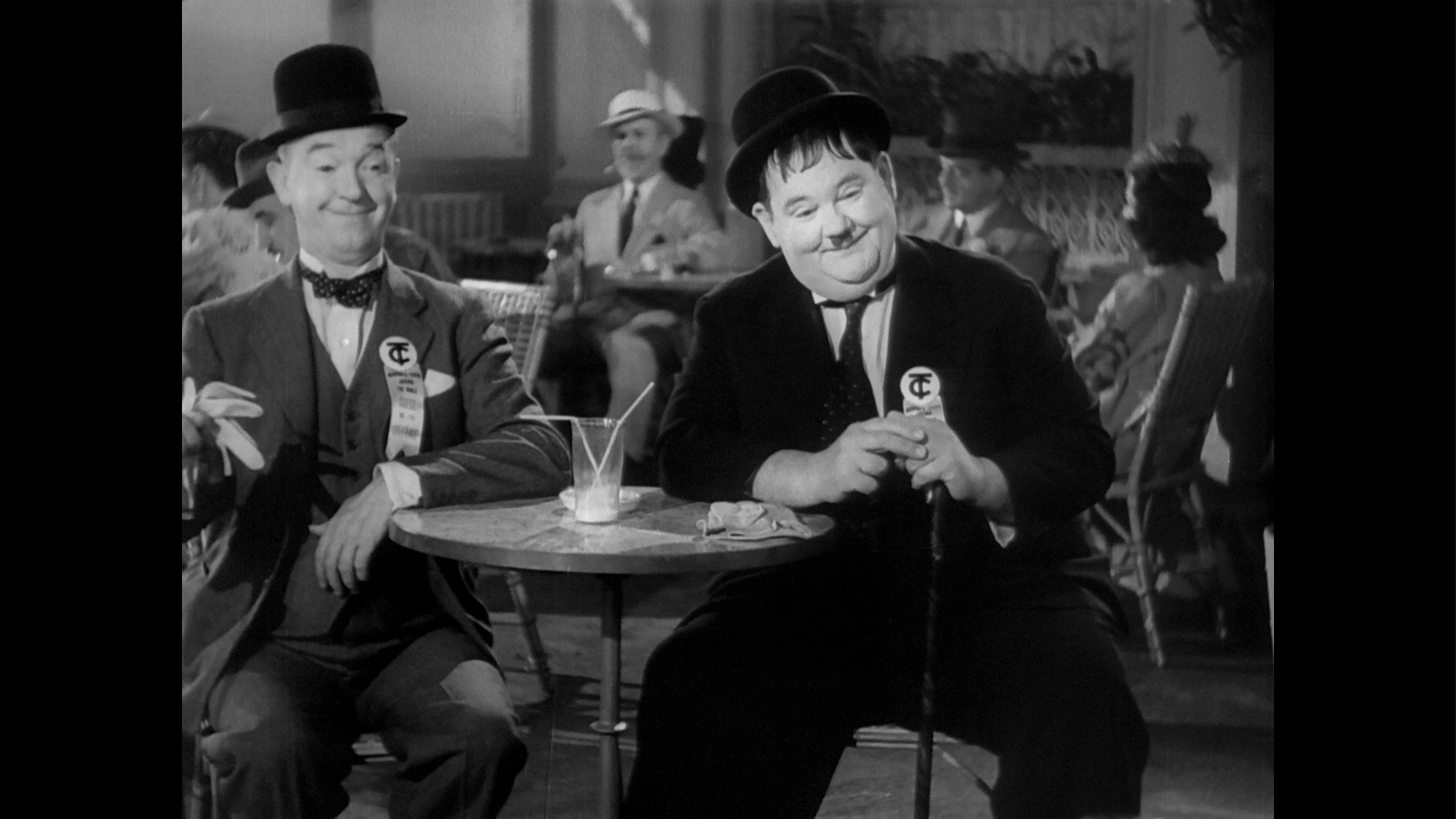
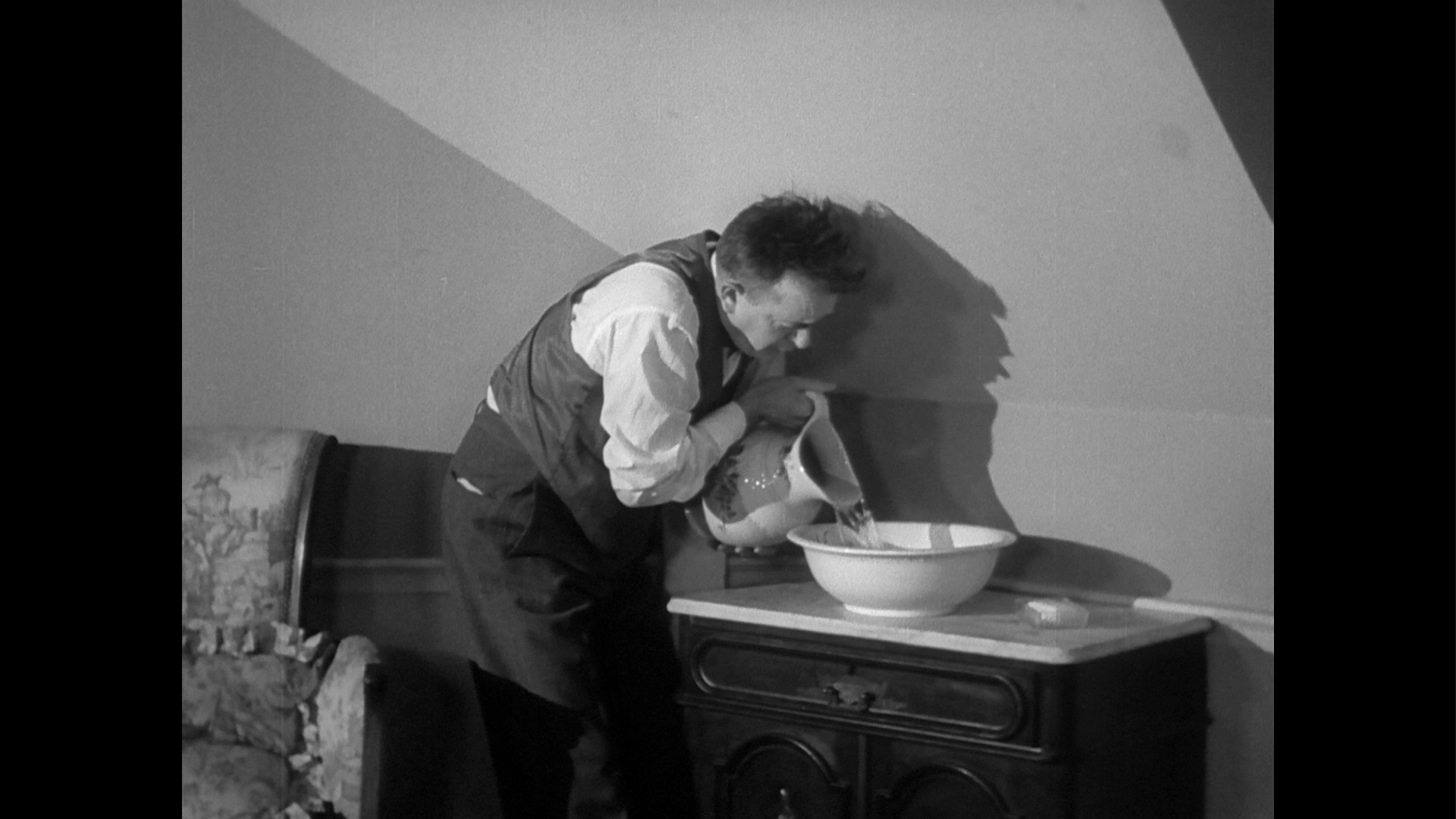

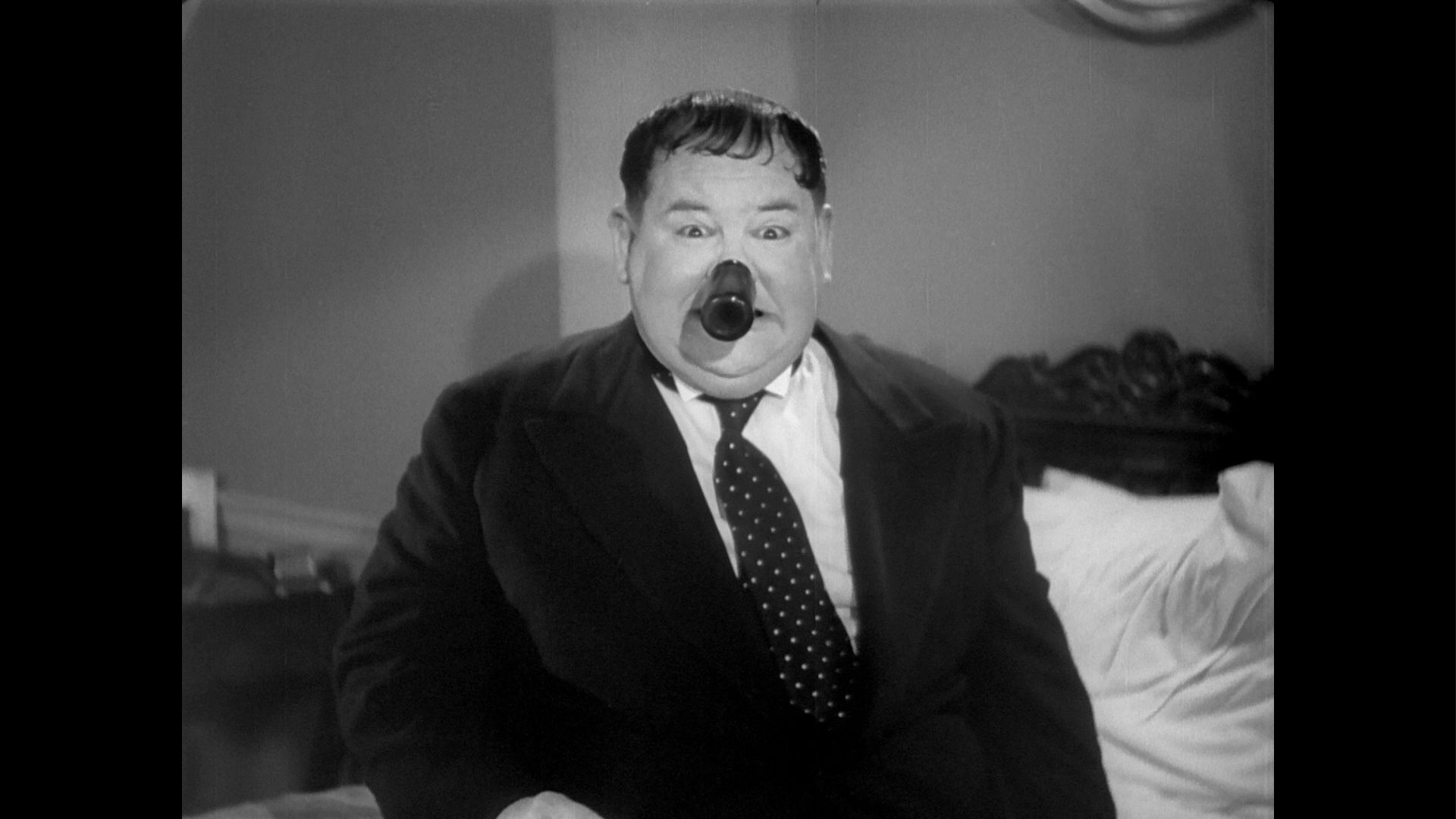
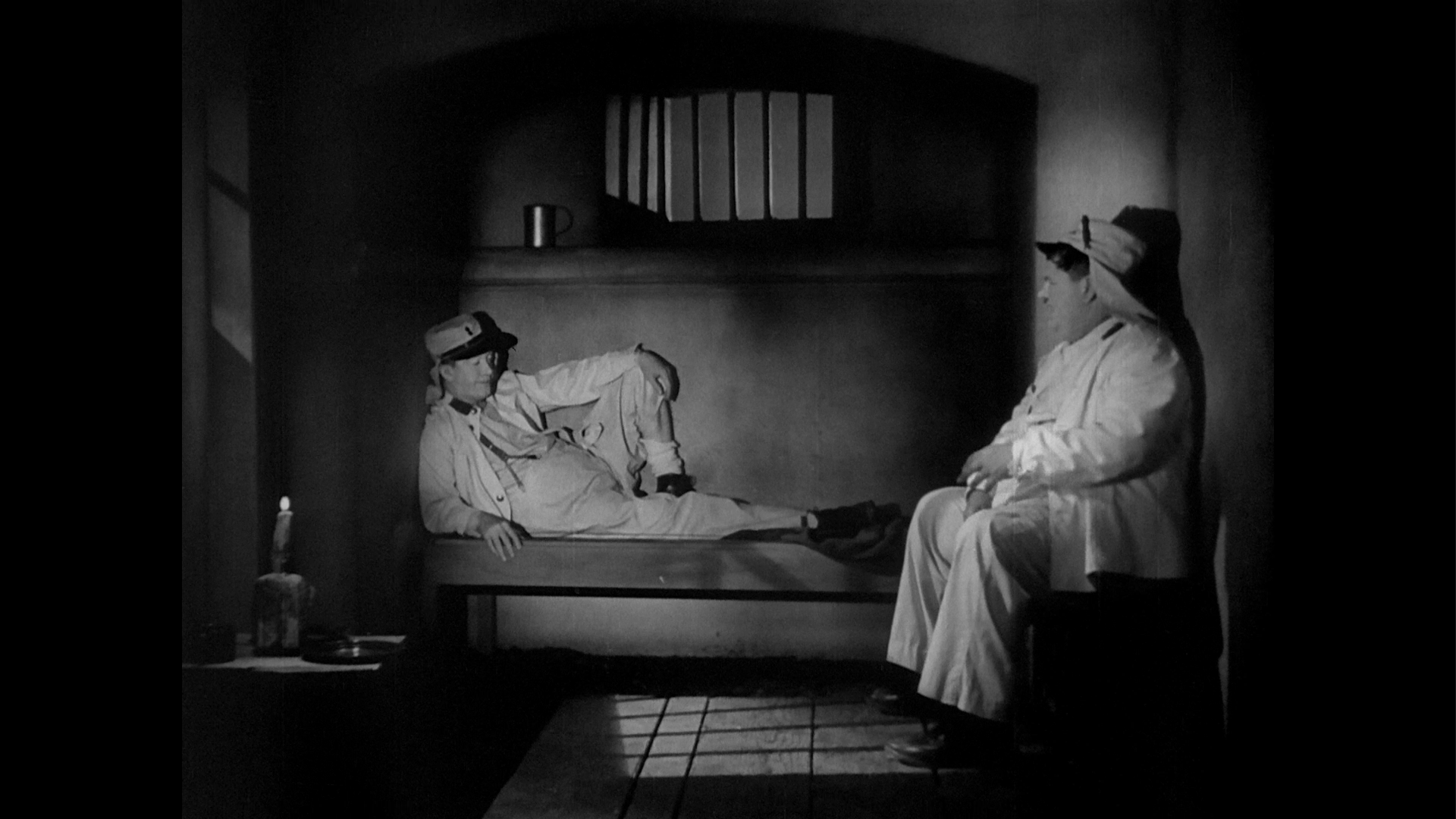
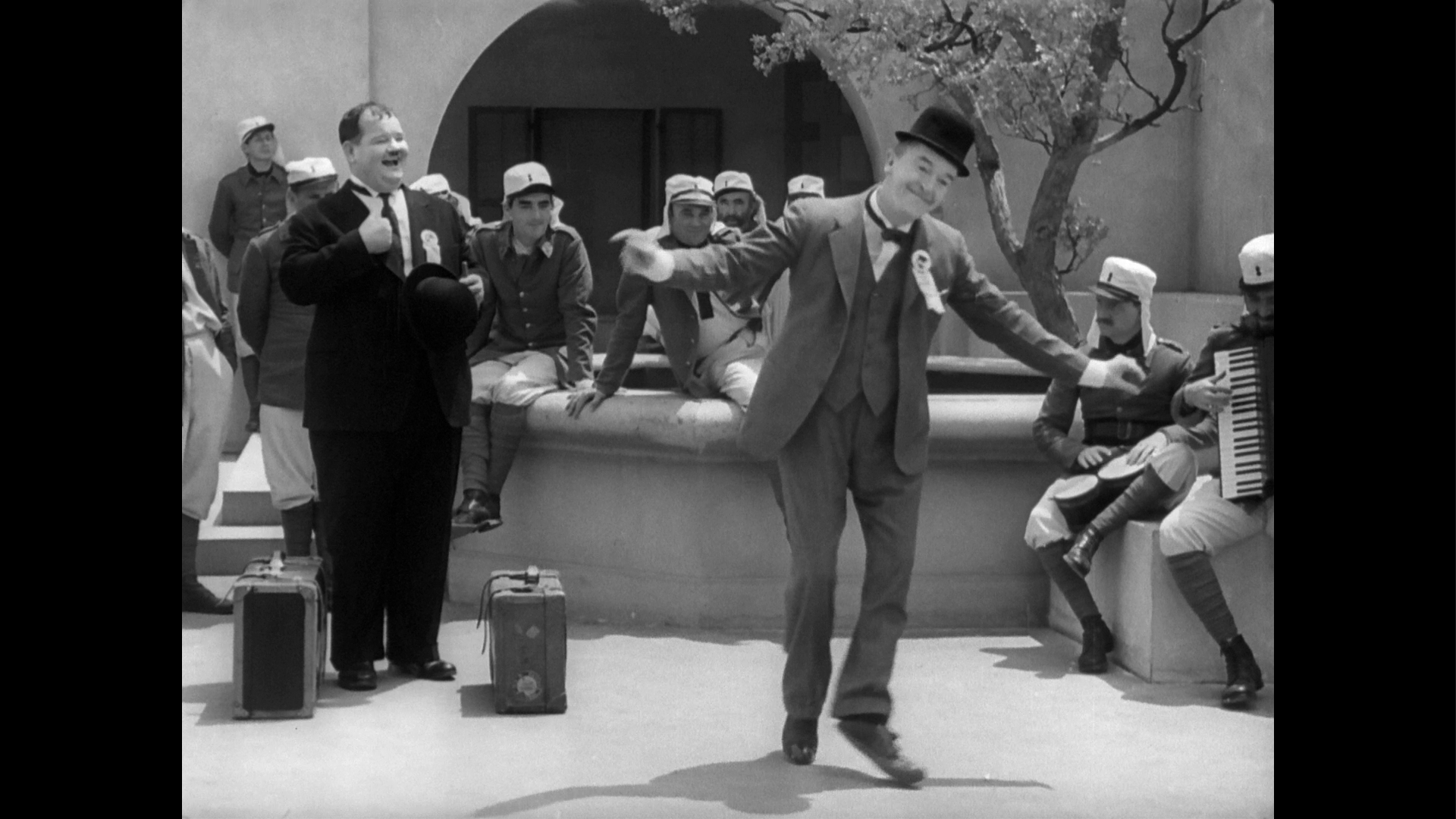
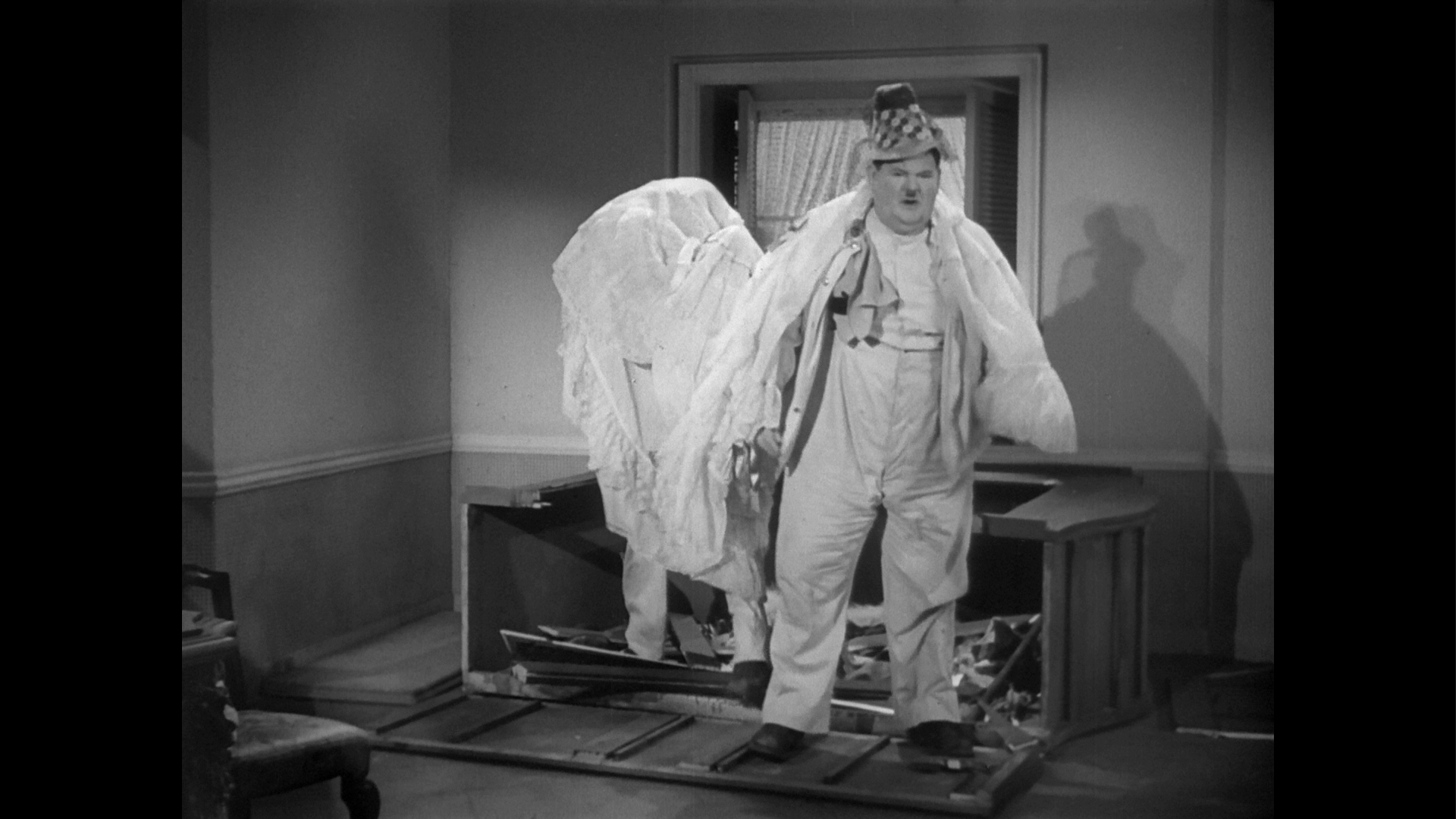
This review has been kindly sponsored by: 
|
|||||

|